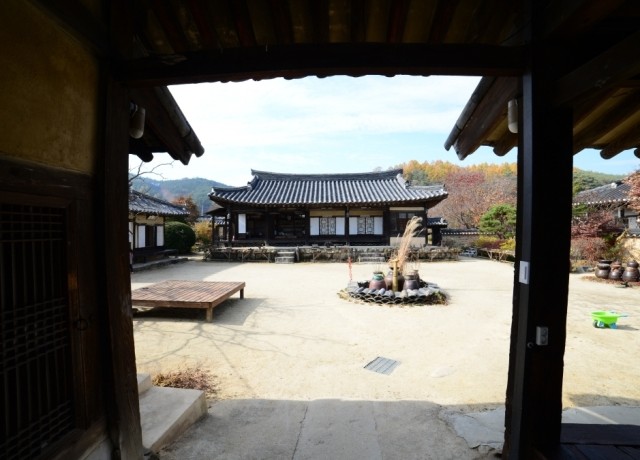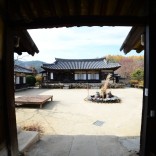Photos
Important Folklore Cultural Heritage No. 279, Mansan Historic House
Mansan Historic House is a designated Important Folklore Cultural Heritage No. 279, located in Chunyang-myeon, Bonghwa-gun, Gyeongsanbuk-do. It is built by Mansan Gang Yong(1846-1934), a civil servant in Late Joseon who also served as Tongjeongdaebu and Jungchuwon officer.
At the end of the 11-room-long Hangrangchae (rooms on both sides of the main gate where servants live) and Soteuldaemun(gate) is the front yard, facing Sarangchae. Sarangchae consists of Sarangbang, Daecheongmaru, and Gamsil where ancestral tablets are kept. Behind is Anchae building formed in square layout. Anchae that consists of Anbang, Sangbang, kitchen, Jungbang, and Gobang located south to Jungbang, surrounds inner yard centering Daecheong. Seongjudanji and Yongdanji that reflects Korean folk religion is kept in Anchae, and Seongjujesa(memorial service for ancestors) is still held in present days. Right to Sarangchae is Seosil where the children used to study, and left to the fence is Chilryuheon the guest room. There are tablets on each building in Mansan Historic House, and each of them is a guide to understand the meaning and purpose of each building. Tablets in Sarangchae reads ‘Mansan Mountain’, ‘Jeongwa’, and ‘Jonyangjae’. Wrote ‘Mansan mountain’, Sir Gang Byeokwon wrote ‘Jeongwa’, and sir Oh Sechang, one of the 33, 3.1 independence activists, wrote ‘Jonyangjae’. The tablet in Seosil that reads ‘Hanmuncheongyeon’, meaning the bright and clean relationship with literary, is written by King Yeongchin at his age 8. The tablet ‘Chilryuheon’ which sir Oh Sechang wrote reveals sir Gang Yong’s desperate wish for the country’s independence as it is natural for the days to go. Other tablets read ‘Baekseoksanbang’, and ‘Samuljae’.







